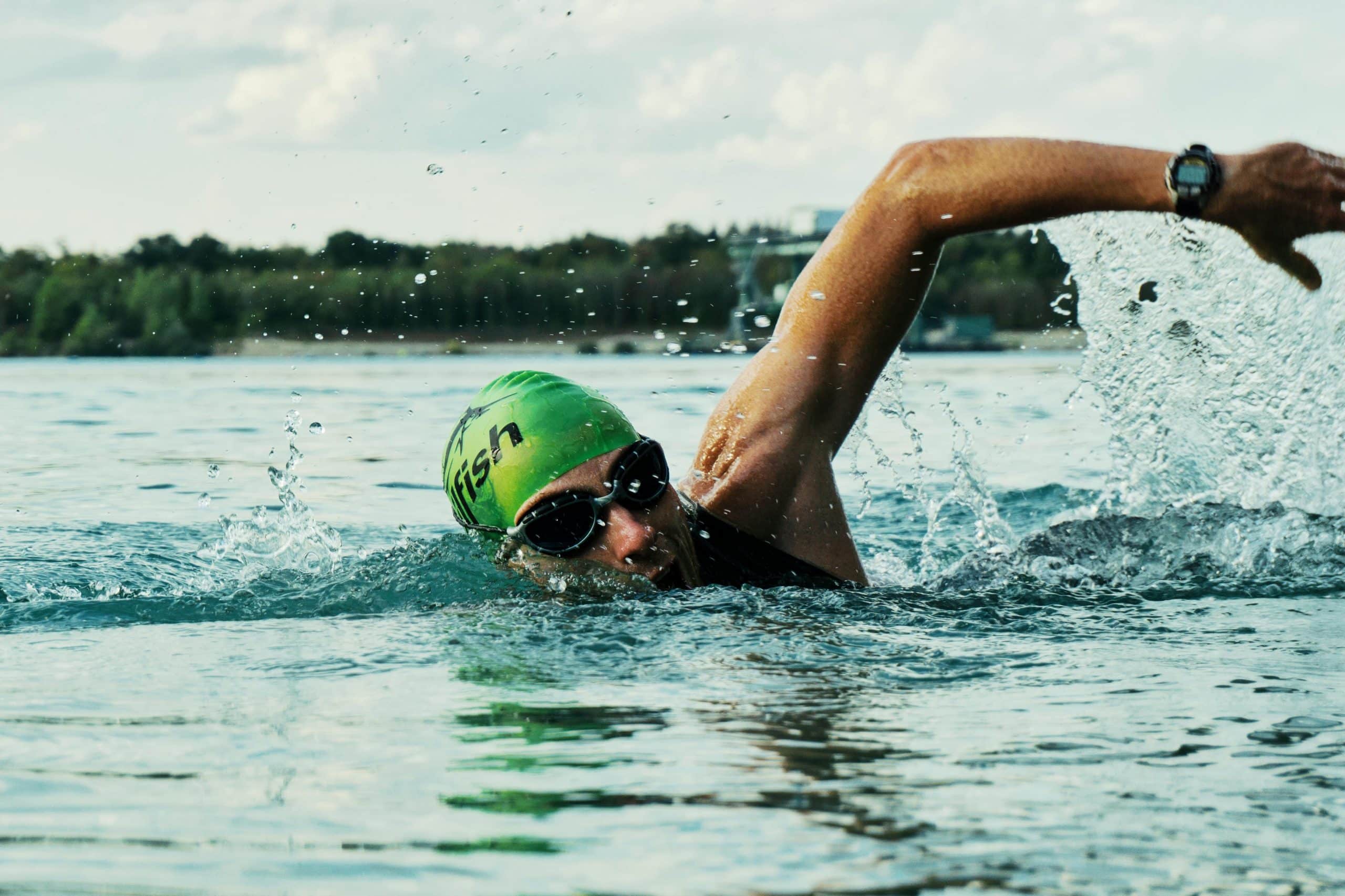What Are the Latest Techniques for Reducing Drag in Open-Water Swimmers?

If you are a swimmer, you might be familiar with the term ‘drag’, and you know how it can impede your speed and performance in the water. Simply put, drag is the resistance a swimmer encounters as they move through the water. It’s an invisible force that works against you, slowing you down, and making your swim less efficient. Reducing drag is the key to swimming faster and more effectively. But how can you minimize this resistance? In this article, you will learn about the latest techniques that will help you reduce drag when swimming in open water.
The Role of Body Position
The first and most significant element that contributes to reducing drag is the body position. Your body’s position in the water will determine how much surface resistance you encounter. The most efficient swimming is achieved when your body is as horizontal as possible, parallel to the water surface.
A voir aussi : How Can Sports Analytics Be Used to Predict Potential Injuries in Professional Dancers?
The correct head position is a critical part of keeping your body flat. Your head should be in a neutral position, looking straight down. Any unnecessary movement or lifting of the head will cause your hips to sink, resulting in increased drag.
The kick also plays an essential role in the body position. A balanced and well-coordinated kick will help maintain your body alignment and minimize drag. It is crucial to note that the kick should come from the hips and not the knees.
A découvrir également : What Are the Best Strategies for Preventing Heat Stroke in Tennis Players?
Maintaining a streamlined body position is not easy and requires constant practice. However, with regular training and technique refinement, you can achieve a position that minimizes drag and maximizes your speed in the water.
Mastering Stroke Efficiency
The second major factor affecting drag is your stroke technique. The less water you pull with each stroke, the less drag you will experience. Hence, it is essential to perfect your stroke technique to move through the water more efficiently.
The most efficient stroke keeps your body close to the surface of the water. Each stroke should be long and strong, pulling as much water as possible. A common mistake is taking too many short, quick strokes, which results in more drag and less propulsion.
In addition, the timing and coordination of your strokes can significantly reduce drag. The catch-up stroke technique, where one hand does not start the pull phase until the other hand finishes, ensures a smoother, less turbulent swim.
Open-water swimmers can benefit from this technique as it not only reduces drag but also allows for better sighting in choppy waters or crowded race conditions.
The Benefit of the High-Elbow Technique
The high-elbow technique, also known as early vertical forearm, is another method to reduce drag. This swim technique involves keeping your elbows high and your forearms vertical during the catch and pull phase of the stroke. It allows the swimmer to use larger muscles in their back and shoulders, providing more power and reducing fatigue.
The high-elbow technique not only reduces drag but also increases the swimmer’s propulsion. It maximizes the amount of water you’re pulling with each stroke, making your swim more efficient. This technique is beneficial for both pool and open-water swimmers.
Although the high-elbow technique can be challenging to master initially, with consistent training and practice, you will see improvements in your swim speed and efficiency.
Incorporating Drag Reduction Equipment
Another approach to lessen drag is to use specialized swimming equipment designed to streamline your body in the water. This includes wearing a well-fitted and hydrodynamic swimsuit, and using swim caps to reduce the resistance created by your hair.
Moreover, many swimmers use body glide or similar products to reduce drag. These products are applied to parts of the body that create most of the friction in the water, such as underarms and between the thighs.
The use of equipment like hand paddles and fins during training can also help improve technique and reduce drag. Paddles enhance your feel for the water and help you practice maintaining a high-elbow position. Fins, on the other hand, help with body position by keeping your hips high in the water.
The correct use of equipment can bring about significant improvements in your swimming efficiency. However, it is essential to note that equipment should complement your training and technique work, not replace it.
The Importance of Regular Training
Regular and focused training is the cornerstone to reducing drag in open-water swimming. It allows you to practice and perfect your body position, stroke technique, and other strategies that contribute to reducing drag.
Training should incorporate drills that focus on elements like head position, body alignment, and high-elbow technique. It is also beneficial to include strength training in your regimen to build the necessary muscle groups for efficient swimming.
While training, it’s crucial to focus on quality over quantity. Instead of counting laps, concentrate on making each stroke count. The aim is to become a more efficient swimmer, not just a faster one.
Implementing these techniques into your swimming routine will require time and patience, but the result will be a significant reduction in drag, making you a more efficient and faster open-water swimmer.
Adjusting Breathing Technique
One other technique that is crucial to reduce drag in open-water swimming is adjusting your breathing technique. Breathing can significantly affect your body position and, therefore, your frontal drag in the water, especially in the front crawl or freestyle stroke, which is the most common in open-water swimming.
Breathing should be quick and efficient. The head turn to breathe should be minimal and in sync with the rotation of your body. Excessive head movement not only breaks your streamlined body position but also increases drag force and can lead to an unbalanced stroke.
When breathing, it’s best to exhale fully underwater before turning your head to inhale. This reduces the time your head is out of the water and helps maintain a flat body position. It’s essential to avoid lifting your head, which causes your hips and legs to sink, creating more drag.
Many swim coaches advocate bilateral breathing, which means breathing on both sides. It not only helps balance your stroke but also improves your ability to sight during open-water swimming races. It is worth noting that this method requires practice to get used to the rhythm, but it can significantly lower your drag and improve your swimming speed.
Utilizing Swim Aids for Practice
Swim aids like pull buoys and kickboards are tools that can help swimmers focus on specific aspects of their stroke and body position. Using these tools can be an effective way to reduce frontal drag and streamline your swimming technique.
A pull buoy is a flotation device that swimmers place between their thighs or ankles. It lifts the swimmer’s lower body closer to the water surface, which reduces the resistance and drag from the lower half of the body. This allows swimmers to focus on improving their arm stroke and body rotation without worrying about their kick.
Kickboards, on the other hand, allow swimmers to isolate their leg kick, helping them maintain a strong, steady kick that contributes to a streamlined body position. Using a kickboard can help swimmers develop a powerful kick and better body position, which are essential for reducing drag in open-water swimming.
It’s important to use these tools as part of a balanced training program. They should be used in conjunction with other training methods and not as a substitute for regular swimming.
Conclusion
Reducing drag in open-water swimming is a multi-faceted process that requires attention to body position, stroke efficiency, breathing technique, and equipment use. Regular, focused training is vital to master these techniques and refine your open-water swimming skills.
Remember to be patient and consistent with your training. It will take time to see improvements, but the end result will be worth it: less drag, more speed, and a more efficient stroke. Whether you’re a competitive racer or a recreational swimmer, these tips will help you swim faster and more efficiently, giving you an edge in your next open-water swim.
Remember, the goal is not just to swim faster, but to swim smarter. Reducing drag is an essential part of improving your swimming speed and efficiency. So, make these techniques a part of your routine, and soon you’ll be leaving your competitors behind in a separate window of speed and efficiency.
